Escalating regulatory pressures, advanced AI-driven financial crime, and increasing operational burden has rendered the periodic, batch-based monitoring obsolete. Banks and Lending institutions must adopt a continuous, real-time monitoring framework to enhance resilience and reduce compliance costs.
Drawing from recent developments, including the FINRA 2025 Annual Regulatory Oversight Report and updates to the EU Anti-Money Laundering (AML) Package, this blog explores why legacy batch-based systems are obsolete, outlines key pain points, and provides a practical framework for transformation.
Lenders can use these insights to actively combat fraud and money laundering.
The Evolving Regulatory and Threat Landscape
Global regulators have intensified their focus on real-time oversight. This makes the traditional periodic monitoring approach insufficient.
As per the FINRA 2025 Report published in January 2025, threat actors or fraudsters are adversely leveraging the generative AI for sophisticated fraud schemes.
Similarly, in the European Union, the AML Package has progressed significantly. The Anti-Money Laundering Authority (AMLA) commenced operations on July 1, 2025, and a new Delegated Regulation was adopted in June 2025 to address deficiencies in third-country AML frameworks. These measures extend scrutiny to mortgage lenders and consumer credit providers. It also mandates transparency in beneficial ownership and closing gaps in high-risk sectors.
Technological advancements further underscore this shift. Real-time data processing and hybrid AI/ML models enable faster transaction analysis. It can quickly detect subtle patterns that static rules may overlook or fail to detect. However, regulators now require explainable AI (XAI) for transparent workflows and fairness testing. This is crucial to ensure audit readiness and robust model risk management, as highlighted in recent OCC guidance.
Operational risks have also expanded through embedded finance and Banking-as-a-Service models. In this model, lenders bear full liability for third-party controls. Industry reports on digital transformation note that the surge in digital transactions is fueled by demands for instant credit. This amplifies vulnerabilities and make delays in detection potentially catastrophic.
Critical Pain Points in Legacy Monitoring Systems
The persistence of batch-based systems exacerbates a cycle of inefficiencies and risks for lending institutions. Consider these top challenges, informed by industry data and recent analyses.
- According to Flagright’s research, legacy rules generate alerts with over 95% false positives. This contributes to a 77% reported shortage of AML analysts and high attrition rates as highlighted by Hawk AI. This is a challenge that can be solved with solutions proven to achieve a 75% reduction in false alerts.
- Approximately 30% of banks rely on monolithic systems that hinder data integration, preventing a unified customer risk view and prolonging resolutions—such as fraud disputes taking up to 90 days, according to reports.
- Systems designed for simple breaches miss evolving typologies like synthetic identity fraud, where perpetrators build credit histories before executing “bust-out” schemes. This can result in significant losses.
- Inconsistent formats and volatile sanctions list lead to manual interventions. As a result, delay in legitimate transactions and frustrated clients.
- With average Suspicious Activity Report (SAR) filing times exceeding 160 days against a 30-day mandate, institutions face consent orders and remediation costs, as seen in cases involving unaddressed crypto risks.
- Analysts often lack expertise in data science and AI interpretation, undermining investments in advanced tools. The rise of new technologies like Agentic AI that autonomously handles monitoring and investigations requires skilled oversight.
Building a Resilient Continuous Monitoring Framework
To address these challenges, lending institutions must adopt an integrated, multilayered strategic framework that combines technology, process, and human expertise.
This is not about replacing one system but about building an ecosystem. A modern framework rests on five essential pillars designed to create a continuous, self-improving cycle of detection and prevention.
- Unified Data Ingestion and Integration
Effective monitoring begins with a holistic risk profile, which is impossible when data is siloed. A modern framework ingests and normalizes data from all disparate sources—including core banking platforms, loan origination systems, CRMs, and third-party data providers—in real time. This unified view of customer activity enables the system to connect seemingly unrelated events into a coherent risk narrative. - A Hybrid AI + Rules Analytics Engine
Static, rule-based systems are necessary for known typologies but are blind to new threats. A resilient framework combines these rules with an adaptive AI/ML engine. Unsupervised learning models can identify anomalies and subtle deviations from established “normal” behavior without prior labels. It can also flag novel fraud schemes that static rules otherwise would miss. Now this hybrid approach provides the dual benefit of reducing false positives and increasing the detection rate of sophisticated, unknown threats, forming the core of a modern transaction monitoring system. - Intelligent Triage and Case Management
The goal is not just to generate alerts, but to generate actionable alerts. The framework must automatically prioritize high-risk cases, enriching them with contextual data to give analysts a head start. A streamlined workflow, such as the one provided by ALFA, should present investigators with all relevant information in a single interface, eliminating the need to toggle between multiple systems and accelerating the time to resolution. - Robust Model Governance and Audit Trails
To satisfy regulators, every step must be transparent and defensible. The framework must include robust model governance to continuously monitor AI for performance drift and bias, ensuring its outputs are explainable. It must also generate immutable, tamper-proof audit logs for every action taken—from the moment an alert is generated to the final case disposition—providing a clear, auditable trail for examinations. - Continuous Learning and Upskilling
Technology alone is insufficient; it must be paired with human expertise. A resilient framework includes a commitment to continuous learning. This involves using investigation outcomes to retrain and refine AI models, creating a feedback loop that makes the system smarter over time. It also requires investing in digital training programs to upskill teams on emerging threats, new technologies, and complex investigative techniques, ensuring the human element of the defense remains as sharp as technology.
Conclusion
For banks and financial institutions, continuous monitoring helps in compliance and drives operational efficiency. As fraud schemes grow more sophisticated and regulators demand real-time proof, institutions that lag risk substantial penalties and reputational harm.
By investing in modern frameworks now, you can transform your organization into a resilient leader in financial integrity. Consider evaluating your current systems against these benchmarks and exploring tailored solutions to stay ahead today and beyond.
Anaptyss helps banks and financial institutions implement advanced, real-time monitoring frameworks for fraud, AML, and audit readiness. For more information, contact us at info@anaptyss.com.



